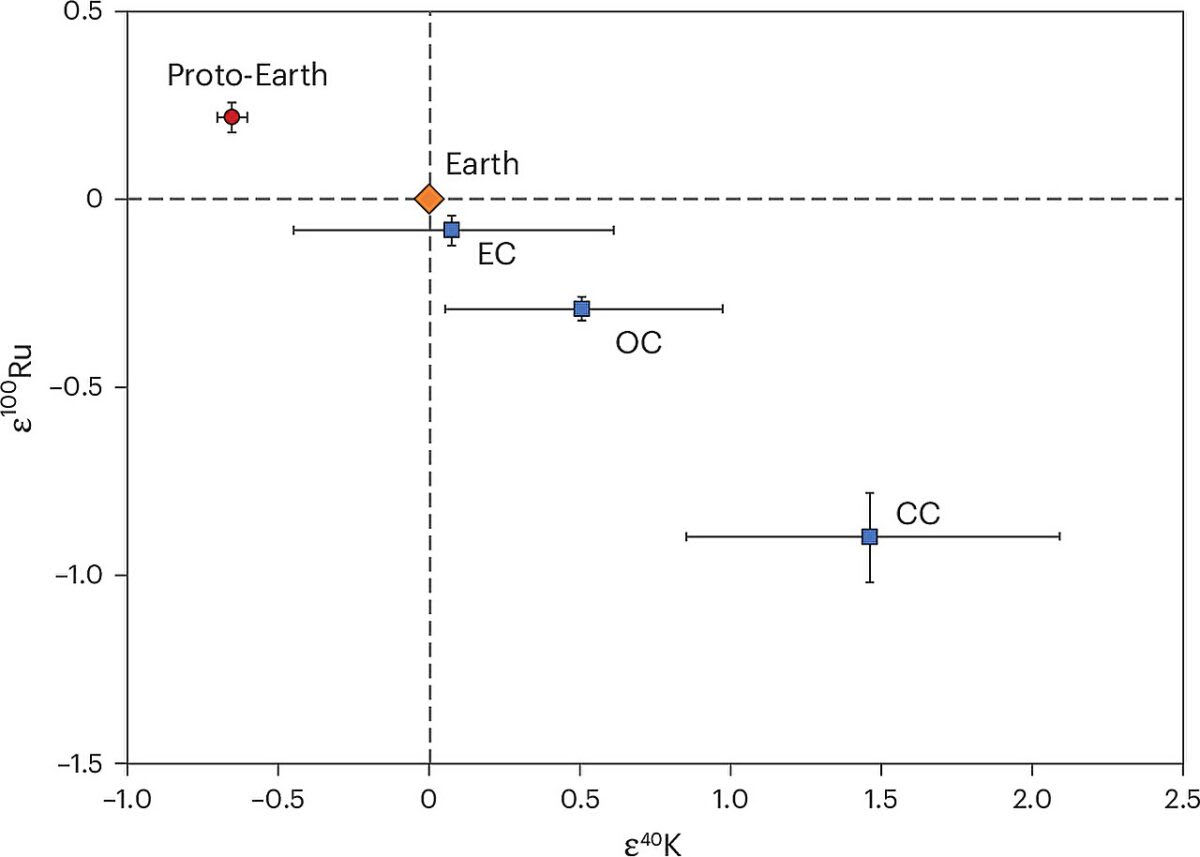Exciting news from the world of geology! Researchers have potentially discovered the very first tangible signs of primordial Earth—the form of our planet that existed prior to a cataclysmic impact that reshaped it into the Earth we inhabit today. The project, spearheaded by a team from MIT along with scientists from China, Switzerland, and the USA, unearthed a rare chemical signature in ancient rock samples that are over 4.5 billion years old.
This groundbreaking research was published in the journal Nature Geoscience, proposing that despite the chaotic beginnings of Earth, elements from its original composition may still exist hidden in the planet’s deep mantle.
The Collision That Changed Everything
According to current scientific models, the formation of Earth began as a swirling disk of gas and dust circling the Sun. Over time, particles converged to form meteorites and eventually our young planet. Amidst this turbulence, early Earth likely formed as a seething mass dominated by molten rock.
About 100 million years after its onset, a massive, Mars-sized body collided with Earth during a phenomenon known as the giant impact, a catastrophic event that not only birthed the Moon but also caused immense melting and mixing within the planet’s structure. This event reset the chemical makeup of Earth, leading many to believe that the initial components of the planet were forever lost.
Uncovering the Isotopic Anomaly in Ancient Rocks
In their most recent research, the team examined rock samples from ancient formations in Greenland, Canada, and volcanic regions in Hawaii—areas recognized for housing some of the oldest geological materials on Earth. They focused their attention on the ratios of three different potassium isotopes: potassium-39, potassium-40, and potassium-41.
Utilizing advanced mass spectrometry techniques, they uncovered a peculiar dip in potassium-40, a radioactive isotope that is already in limited supply in most geological materials found on the planet’s surface. This unique imbalance had never been observed in current geological samples, indicating that these ancient rocks somehow avoided the turbulent mixing arising from the giant impact.
“This might be the first concrete evidence that we’ve managed to preserve materials from the proto Earth,” commented Nicole Nie, a planetary scientist at MIT and lead author of the research. She expressed surprise at finding a chemical signature that dates back before the giant impact, considering the extensive geological history unearthing Earth’s long-term processes.
Insights from Beyond Earth—What’s Missing?
The research team, including experts from institutions like Chengdu University of Technology, Carnegie Institution for Science, ETH Zurich, and Scripps Institution of Oceanography, went through various meteorites sourced from across the solar system, discovering they bore distinctive potassium isotope signatures, representing the different environments where they formed. Interestingly, they identified an unusual anomaly in some samples, not recognized previously in known Earth compositions, suggesting that potassium might serve as a hint to uncover the materials from early planetary formation.
In their analysis, the Zakian researchers found that this tricky anomaly was mirrored in the rock samples from Earth but did not correspond with any meteorite profiles, leading to the hypothesis that the original materials responsible for forming early Earth might not be reflected in contemporary meteorite collections. As the next steps, they modeled how the potassium-40 deficiency would adapt over billions of years due to impacts and geological forces.
Their simulations consistently indicated that modern samples showed higher potassium-40 levels than those noted in ancient material, reinforcing the theory that certain deep Earth components have remained unchanged since the planet was birthed.
Understanding Earth’s Beginnings
This new research contributes significantly to exploring Earth’s history, revealing fundamental aspects of its evolutionary journey. Nicole Nie emphasized that scientists have historically deduced Earth’s early composition by referencing meteorites, remarking that “the current catalog of meteorites is incomplete.” Her insights highlight just how much we still need to learn about the elements that initially combined to form our planet.


















